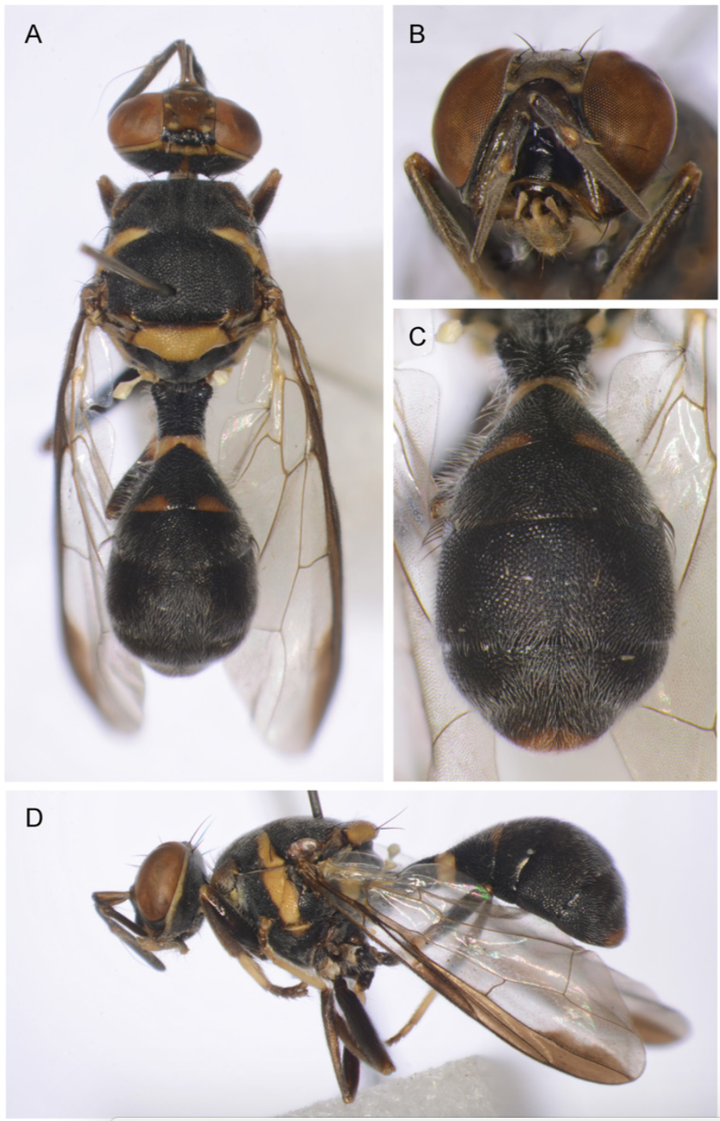Taiwan’s Dacini Fruit Flies: Rare Endemics and Abundant Pests, along Altitudinal Gradients
 Image credit: C Doorenweerd
Image credit: C DoorenweerdAbstract
Taiwan is at the northeastern limits of the Asian center of diversity for fruit flies in the tribe Dacini, and the country has several endemic species. Between 2013 and 2015, we surveyed the diversity of dacine fruit flies in Taiwan using kairomone baited traps and found 15 species. We report four species for the first time in Taiwan and figure them: Bactrocera nigrifacia (Zhang, Ji, & Chen 2011), B. rubigina (Wang & Zhao 1989), B. dorsaloides (Hardy & Adachi 1954) and B. bhutaniae (Drew & Romig 2013). For the species that are classified as pests, we explored how their spatial distribution correlates with elevation. The oriental fruit fly, Bactrocera dorsalis (Hendel 1912), is the most abundant pest on the island, but decreases sharply in abundance at higher elevations. Other pest species occur in much smaller numbers and respond differently to elevation and latitude. We also re-evaluated all records of previously recorded species and add our records to provide a checklist with 30 species of Dacini that occur in Taiwan. All species are regarded as native, six are endemic, and seven are agricultural pests. Historical records were georeferenced and plotted on maps along with records from the 2013–2015 survey to collate all known distribution data. We briefly discuss the state of knowledge of the fruit flies in Taiwan and how the distribution and host usage of Dacini may change in the future. Finally, considering the economic importance of the group, our understanding of their diversity and distributions is surprisingly poor.